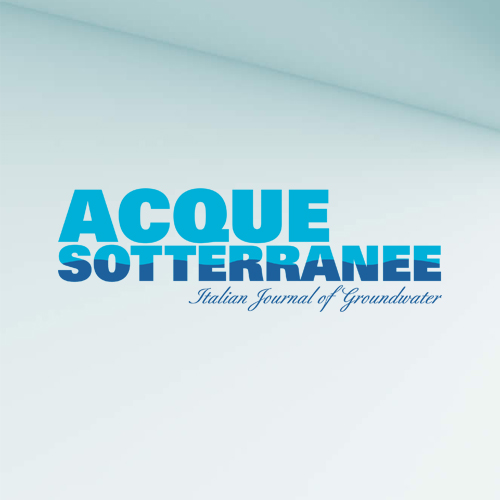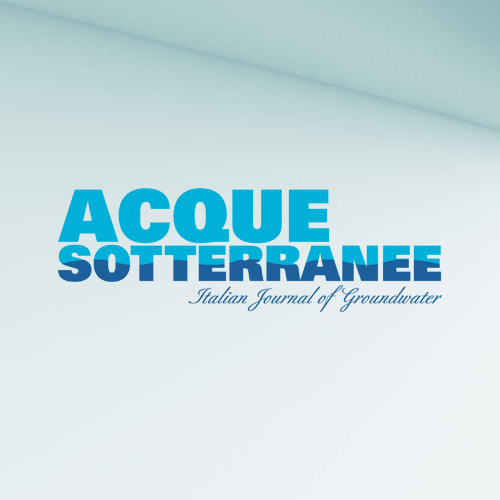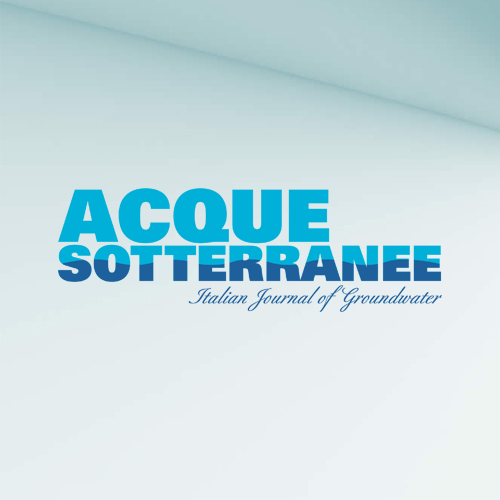Lepini Mountains Carbonatic Ridge: try of springs recharge areas verification and water exchange quantification with Pontina Plain by use of a numerical model (Central Italy)
Submitted: 27 July 2012
Accepted: 3 March 2016
Published: 30 March 2014
Accepted: 3 March 2016
Abstract Views: 758
PDF: 840
Publisher's note
All claims expressed in this article are solely those of the authors and do not necessarily represent those of their affiliated organizations, or those of the publisher, the editors and the reviewers. Any product that may be evaluated in this article or claim that may be made by its manufacturer is not guaranteed or endorsed by the publisher.
All claims expressed in this article are solely those of the authors and do not necessarily represent those of their affiliated organizations, or those of the publisher, the editors and the reviewers. Any product that may be evaluated in this article or claim that may be made by its manufacturer is not guaranteed or endorsed by the publisher.
Similar Articles
- Giovanni Conte, Pio Di Manna, Rossella Maria Gafà, Lucio Martarelli, Gennaro Maria Monti, Marco Amanti, Sustainable yield of the Colle Quartara carbonate aquifer in the Southern Lepini Mountains (Central Italy) , Acque Sotterranee - Italian Journal of Groundwater: Vol. 5 No. 3 (2016)
- Matia Menichini, Marco Doveri, Leonardo Piccini, Hydrogeological and geochemical overview of the karst aquifers in the Apuan Alps (Northwestern Tuscany, Italy) , Acque Sotterranee - Italian Journal of Groundwater: Vol. 5 No. 1 (2016)
- Maurizio Gorla, Roberto Simonetti, Chiara Righetti, Basin-scale hydrogeological, geophysical, geochemical and isotopic characterization: an essential tool for building a Decision Support System for the sustainable management of alluvial aquifer systems within the provinces of Milan and Monza-Brianza , Acque Sotterranee - Italian Journal of Groundwater: Vol. 5 No. 3 (2016)
- Francesca Lotti, John Doherty, The role of numerical models in environmental decision-making , Acque Sotterranee - Italian Journal of Groundwater: Vol. 5 No. 3 (2016)
- Alessio Fileccia, Some simple procedures for the calculation of the influence radius and well head protection areas (theoretical approach and a field case for a water table aquifer in an alluvial plain) , Acque Sotterranee - Italian Journal of Groundwater: Vol. 4 No. 3 (2015)
- Loris Colombo, Statistical methods and transport modeling to assess PCE hotspots and diffuse pollution in groundwater (Milan FUA) , Acque Sotterranee - Italian Journal of Groundwater: Vol. 6 No. 4 (2017)
- Lucio Martarelli, Marcello Iacuitto, Vincenzo Gregori, Riccardo Massimiliano Menotti, Marco Petitta, Anna Rosa Scalise, The Rieti Land Reclamation Authority relevance in the management of surface waters for the irrigation purposes of the Rieti Plain (Central Italy) , Acque Sotterranee - Italian Journal of Groundwater: Vol. 5 No. 2 (2016)
- Davide Fronzi, Francesca Banzato, Stefano Caliro, Costanza Cambi, Carlo Cardellini, Roberto Checcucci, Lucia Mastrorillo, Francesco Mirabella, Marco Petitta, Daniela Valigi, Alberto Tazioli, Preliminary results on the response of some springs of the Sibillini Mountains area to the 2016-2017 seismic sequence , Acque Sotterranee - Italian Journal of Groundwater: Vol. 9 No. 1 (2020)
- Ezio Crestaz, Michele Pellegrini, Peter Schätzl, Tight-coupling of groundwater flow and transport modelling engines with spatial databases and GIS technology: a new approach integrating Feflow and ArcGIS , Acque Sotterranee - Italian Journal of Groundwater: Vol. 1 No. 2 (2012)
- Gioia Bravini, Matia Menichini, Marco Doveri, Numerical modelling in the coastal aquifer between Burlamacca Canal and Bufalina Ditch, southern Versilia (Tuscany, Italy) , Acque Sotterranee - Italian Journal of Groundwater: Vol. 4 No. 1 (2015)
You may also start an advanced similarity search for this article.


 https://doi.org/10.7343/as-061-14-0088
https://doi.org/10.7343/as-061-14-0088










